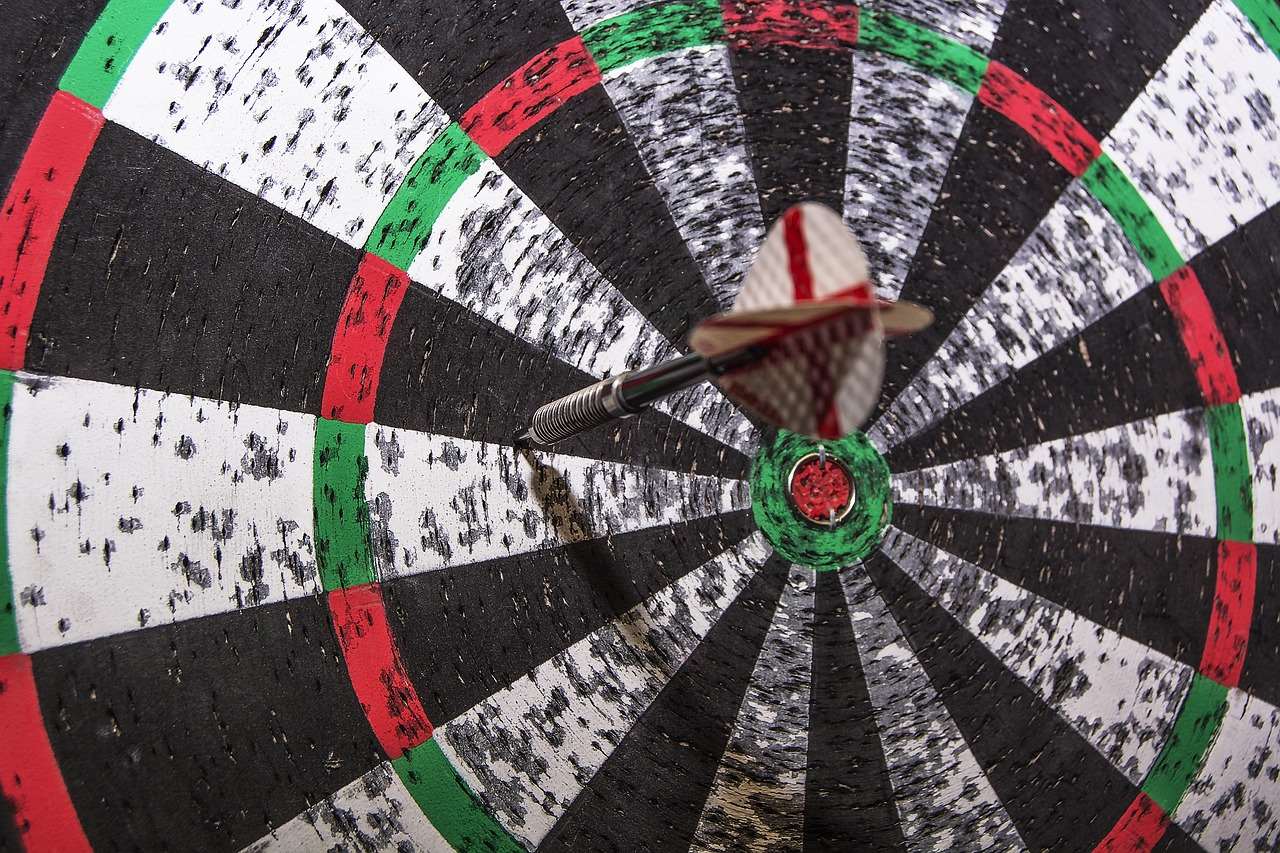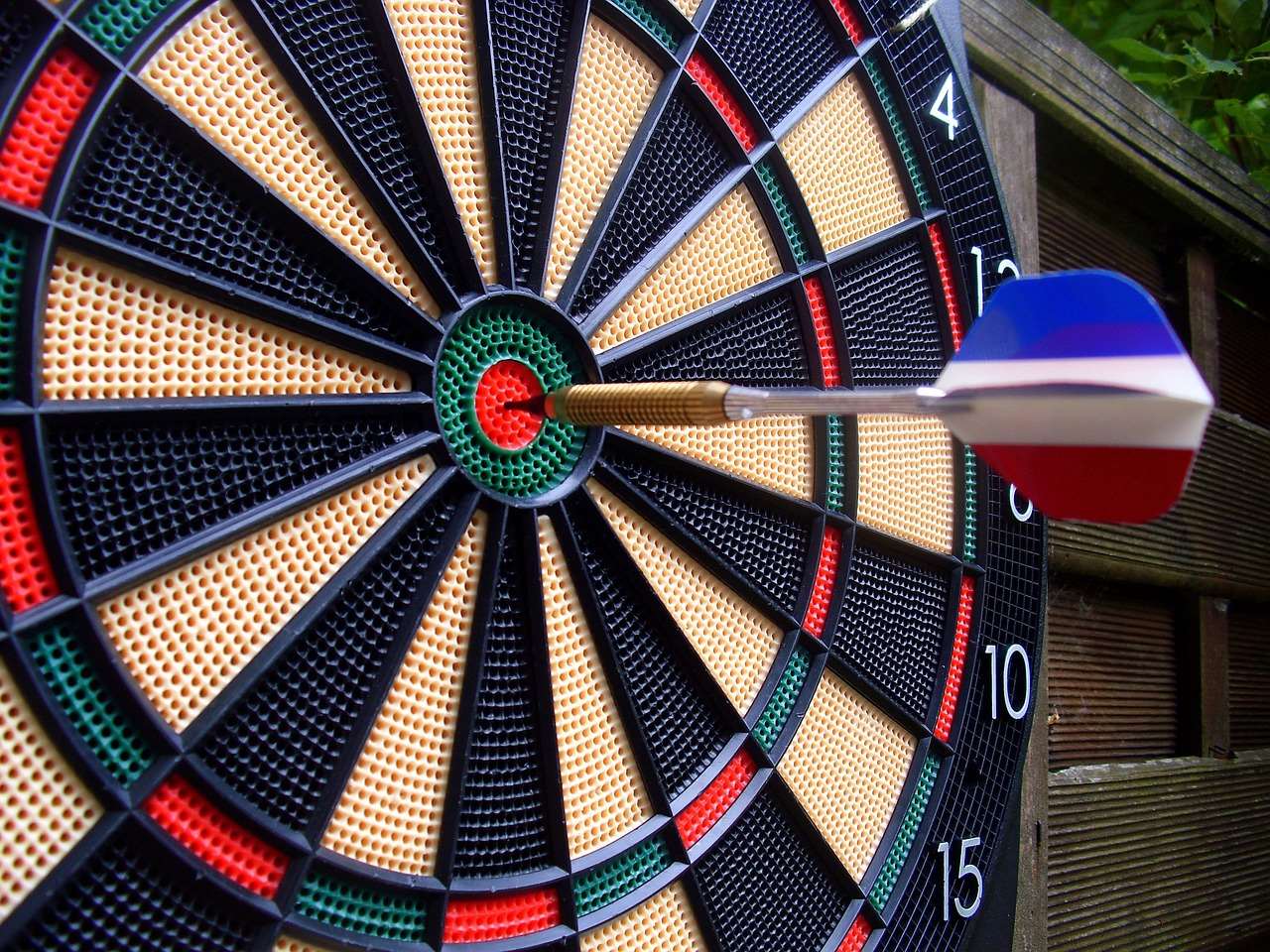Mastering fantasy darts requires a strategic approach, and the key to success lies in understanding the strengths and weaknesses of different player selection and team management methods; this Fantasy Darts Strategy Comparison will illuminate various approaches, equipping you to build a winning team. We’ll delve into statistical analysis, budget management, risk assessment, and more, offering actionable insights to improve your fantasy darts game.
⚠️ Still Using Pen & Paper (or a Chalkboard)?! ⚠️
Step into the future! The Dart Counter App handles all the scoring, suggests checkouts, and tracks your stats automatically. It's easier than you think!
Try the Smart Dart Counter App FREE!Ready for an upgrade? Click above!
Building Your Foundation: Understanding the Basics of Fantasy Darts Strategy
Before diving into specific strategies, it’s crucial to grasp the fundamental elements of fantasy darts. Most platforms operate on a salary cap system, meaning you must assemble a team of players while staying within a pre-defined budget. Each player is assigned a value based on their perceived skill and potential. Your goal is to select players who will accumulate the most points based on their real-world performance. This performance is typically measured by factors like averages, 180s, checkout percentages, and wins.
Effective fantasy darts strategy begins with thorough research. Familiarize yourself with the player pool, their recent performances, and their head-to-head records. Consider factors beyond simple averages, such as a player’s form in specific tournaments or against particular opponents. A player who consistently performs well against top-ranked opponents might be a valuable asset, even if their overall average is slightly lower than others.
Key Performance Indicators (KPIs) for Fantasy Darts
Understanding which statistics are most relevant to your fantasy platform’s scoring system is paramount. While averages are a common metric, other KPIs can provide a more nuanced view of a player’s potential:
- Average: Overall average score per leg. A higher average generally indicates a more consistent and high-scoring player.
- 180s per Leg: Frequency of hitting maximum scores. This is often a significant point-scoring factor in fantasy darts.
- Checkout Percentage: Accuracy in finishing legs. A high checkout percentage demonstrates composure and reliability under pressure.
- First 9 Dart Average: Indicates how quickly a player gets off to a good start.
- Wins: Winning matches translates directly into points on most platforms.
By focusing on these key performance indicators, you can gain a more comprehensive understanding of a player’s strengths and weaknesses, enabling you to make more informed selection decisions. You can also analyze Player Average Score Analysis Darts to further refine your player assessment.

Budget Management: Maximizing Value in Fantasy Darts
One of the biggest challenges in fantasy darts is effectively managing your budget. You need to find players who offer the best value for their price. This means identifying undervalued players who are likely to outperform their salary expectations. This is where a strong **fantasy darts strategy** really pays off.
Identifying Undervalued Players
Here are a few strategies for finding undervalued players:
- Recent Form Analysis: Players who have been performing well recently but whose price hasn’t yet caught up to their current form can be excellent value picks. Recent Form Impact Darts Betting can provide helpful insight into this.
- Tournament Specialists: Some players excel in specific tournaments. Identifying these players and selecting them for those tournaments can provide a significant edge.
- Newcomers and Rising Stars: Keep an eye on emerging talents who are starting to make a name for themselves. They often have lower prices due to their lack of established track records but may possess significant upside potential.
Consider the following example: A player consistently reaches the quarter-finals of major tournaments but is priced lower than players who consistently lose in the early rounds. This player represents a strong value proposition, as they are likely to accumulate more points despite their lower price.
Risk Assessment: Balancing Safe Picks with High-Risk, High-Reward Options
A well-rounded fantasy darts strategy comparison must include an element of risk assessment. Should you load up on proven, reliable players, or take a chance on some less predictable, high-upside options? The answer often lies in finding a balance between the two.
The Case for Safe Picks
Safe picks are established players with consistent track records. They are less likely to experience dramatic fluctuations in performance, providing a stable foundation for your team. While they may not offer the highest potential point ceiling, their reliability can help you avoid costly losses. Examples would include players with consistently high averages and checkout percentages.
Advantages of Safe Picks:
- Reliable point production
- Reduced risk of underperformance
- Consistent contribution to your team’s overall score

The Allure of High-Risk, High-Reward Players
High-risk, high-reward players are those with the potential for explosive performances but also the risk of complete failure. These players might be young talents, inconsistent veterans, or players who excel in specific formats but struggle in others. Selecting these players can be a gamble, but if they perform well, they can provide a significant boost to your team’s score. Consider analyzing 180s Per Leg Stats For Betting for players with high 180 averages but inconsistent overall performance.
Advantages of High-Risk, High-Reward Picks:
- Potential for massive point totals
- Opportunity to gain a significant edge over your competitors
- Excitement and unpredictability
The key is to manage your risk exposure. Don’t build an entire team of high-risk players. Instead, sprinkle a few into your roster alongside your safe picks to create a balanced and dynamic team. It can be advantageous to look into Head To Head Stats Darts Betting too.
Tournament Selection: Tailoring Your Strategy to the Event
Different darts tournaments have different formats and levels of competition. A successful Fantasy Darts Strategy Comparison takes this into account. Your strategy should be tailored to the specific characteristics of each event. For example, a major tournament with a long format might favor players with stamina and consistency, while a shorter, more volatile format might reward players with explosive scoring potential.
Consider the following factors when selecting players for a specific tournament:
- Format: Is it a short format (e.g., best-of-five sets) or a long format (e.g., best-of-11 sets)?
- Level of Competition: Is it a major tournament with all the top players or a smaller event with a less competitive field?
- Venue: Do certain players tend to perform better in specific venues or countries?
- Recent Form: How have the players been performing in recent tournaments leading up to the event?
Researching player performance in previous editions of the same tournament can also provide valuable insights. Some players have a knack for performing well in specific events, regardless of their overall form.

The Power of Statistics: Leveraging Data for Informed Decisions
In the world of fantasy darts, data is your greatest asset. By leveraging statistical analysis, you can gain a significant edge over your competitors. Player statistics for darts betting are invaluable. Don’t rely solely on gut feeling or anecdotal evidence. Instead, delve into the numbers and use them to inform your selection decisions. Make sure you know Using Player Stats For Darts Bets when making your picks.
Where to Find Reliable Darts Statistics
Several websites and resources provide comprehensive darts statistics. Look for sites that offer detailed data on player averages, 180s, checkout percentages, and other relevant KPIs. Some platforms even provide advanced analytics tools that allow you to compare players and identify potential sleepers.
Here are a few reputable sources for darts statistics:
- DartConnect
- DartsDatabase
- PDC Official Website
Remember to critically evaluate the data you find. Consider the sample size and the context in which the statistics were recorded. A player with a high average over a small sample size might not be as reliable as a player with a slightly lower average over a larger sample size.
Monitoring and Adjusting: Staying Agile Throughout the Season
Your fantasy darts strategy should not be static. The world of darts is constantly evolving, with player form fluctuating, new talents emerging, and unexpected upsets occurring. To stay ahead of the curve, you need to actively monitor your team’s performance and make adjustments as needed.
When to Make Changes to Your Roster
Here are a few situations that might warrant changes to your roster:
- Player Injury or Illness: If a player is injured or ill, they are unlikely to perform at their best. Replace them with a healthy alternative.
- Significant Change in Form: If a player experiences a dramatic decline in form, it might be time to cut your losses and move on.
- Emergence of a New Talent: If a new player starts to consistently outperform expectations, consider adding them to your team.
- Favorable Matchup: If a player has a particularly favorable matchup against a weaker opponent, they might be a good addition for that specific tournament.
Don’t be afraid to make bold moves if you believe they will improve your team’s chances of success. However, avoid making impulsive decisions based on short-term results. Take a long-term view and focus on building a consistently competitive team. If you are interested in betting, you may want to review the Darts Betting And Fantasy Leagues Guide.

Advanced Strategies: Tournament-Specific Adjustments and Contrarian Thinking
For the seasoned fantasy darts player, delving into advanced strategies can provide a crucial edge. This involves going beyond basic statistics and considering nuanced factors that influence player performance. It also means embracing contrarian thinking and identifying opportunities where the market is mispricing players.
Tournament-Specific Adjustments
As mentioned earlier, different tournaments favor different types of players. However, beyond the basic format considerations, you can also analyze historical data to identify specific trends and patterns. For instance, some tournaments are known for producing upsets, while others tend to be dominated by the top-ranked players. Adjusting your team composition based on these tournament-specific characteristics can significantly improve your chances of success. This may include focusing on How To Analyze Dart Player Form.
For example, if a tournament is known for its challenging playing conditions (e.g., high altitude, noisy crowd), you might prioritize players who are known for their mental toughness and ability to perform under pressure.
Contrarian Thinking
Contrarian thinking involves going against the grain and selecting players that are under-owned or undervalued by the majority of fantasy players. This strategy can be risky, but it also offers the potential for significant rewards. If you can identify a player who is being overlooked by the market but has a high probability of performing well, you can gain a significant edge over your competitors. You can also think about Dart Player Performance Analysis.
To identify contrarian picks, look for players who have been underperforming recently but have a history of success. These players might be priced lower than their true potential, presenting a buying opportunity. Also, consider players who have difficult matchups on paper but possess the skill and determination to pull off an upset.

Conclusion: Mastering Your Fantasy Darts Strategy
Ultimately, success in fantasy darts hinges on a well-defined and adaptable strategy. This Fantasy Darts Strategy Comparison has explored various aspects of building a winning team, from understanding key statistics and managing your budget to assessing risk and tailoring your approach to specific tournaments. Remember to stay informed, monitor your team’s performance, and adjust your strategy as needed. The more you learn and adapt, the better your chances of dominating your league. The key takeaway: combine sound statistical analysis with a degree of calculated risk. With dedication and a strategic mindset, you can significantly improve your fantasy darts performance. Now it’s time to put these strategies into action and assemble your winning team! Dive into the world of fantasy darts with newfound confidence!
Hi, I’m Dieter, and I created Dartcounter (Dartcounterapp.com). My motivation wasn’t being a darts expert – quite the opposite! When I first started playing, I loved the game but found keeping accurate scores and tracking stats difficult and distracting.
I figured I couldn’t be the only one struggling with this. So, I decided to build a solution: an easy-to-use application that everyone, no matter their experience level, could use to manage scoring effortlessly.
My goal for Dartcounter was simple: let the app handle the numbers – the scoring, the averages, the stats, even checkout suggestions – so players could focus purely on their throw and enjoying the game. It began as a way to solve my own beginner’s problem, and I’m thrilled it has grown into a helpful tool for the wider darts community.